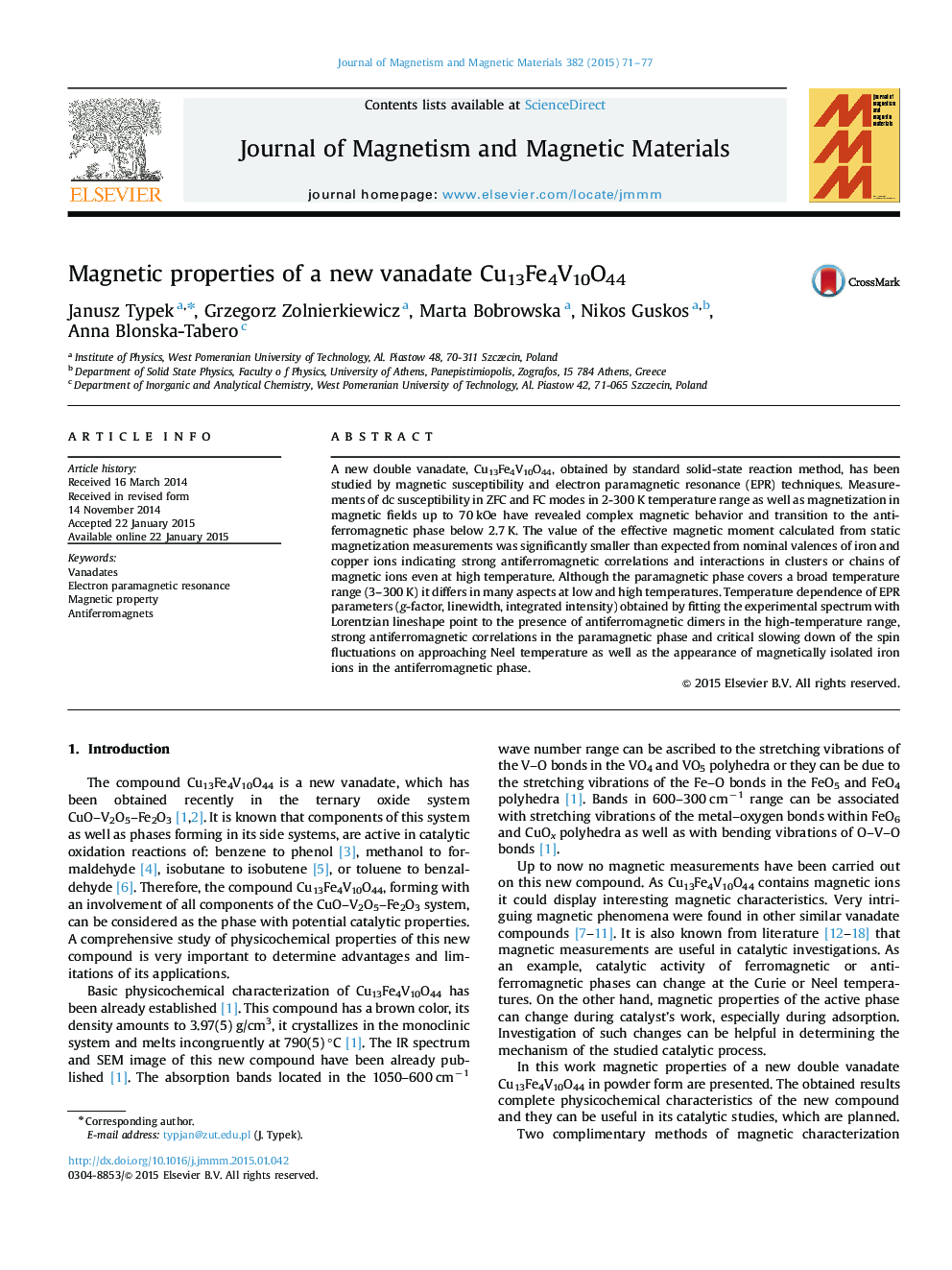| Article ID | Journal | Published Year | Pages | File Type |
|---|---|---|---|---|
| 1799226 | Journal of Magnetism and Magnetic Materials | 2015 | 7 Pages |
•Magnetization and EPR study of Cu13Fe4V10O44 has been made in 2–300 K range.•Antiferromagnetic transition at 2.7 K has been revealed.•Magnetically silent copper and iron ions were inferred.•Complex and inhomogeneous magnetic structure were detected.
A new double vanadate, Cu13Fe4V10O44, obtained by standard solid-state reaction method, has been studied by magnetic susceptibility and electron paramagnetic resonance (EPR) techniques. Measurements of dc susceptibility in ZFC and FC modes in 2-300 K temperature range as well as magnetization in magnetic fields up to 70 kOe have revealed complex magnetic behavior and transition to the antiferromagnetic phase below 2.7 K. The value of the effective magnetic moment calculated from static magnetization measurements was significantly smaller than expected from nominal valences of iron and copper ions indicating strong antiferromagnetic correlations and interactions in clusters or chains of magnetic ions even at high temperature. Although the paramagnetic phase covers a broad temperature range (3–300 K) it differs in many aspects at low and high temperatures. Temperature dependence of EPR parameters (g-factor, linewidth, integrated intensity) obtained by fitting the experimental spectrum with Lorentzian lineshape point to the presence of antiferromagnetic dimers in the high-temperature range, strong antiferromagnetic correlations in the paramagnetic phase and critical slowing down of the spin fluctuations on approaching Neel temperature as well as the appearance of magnetically isolated iron ions in the antiferromagnetic phase.
